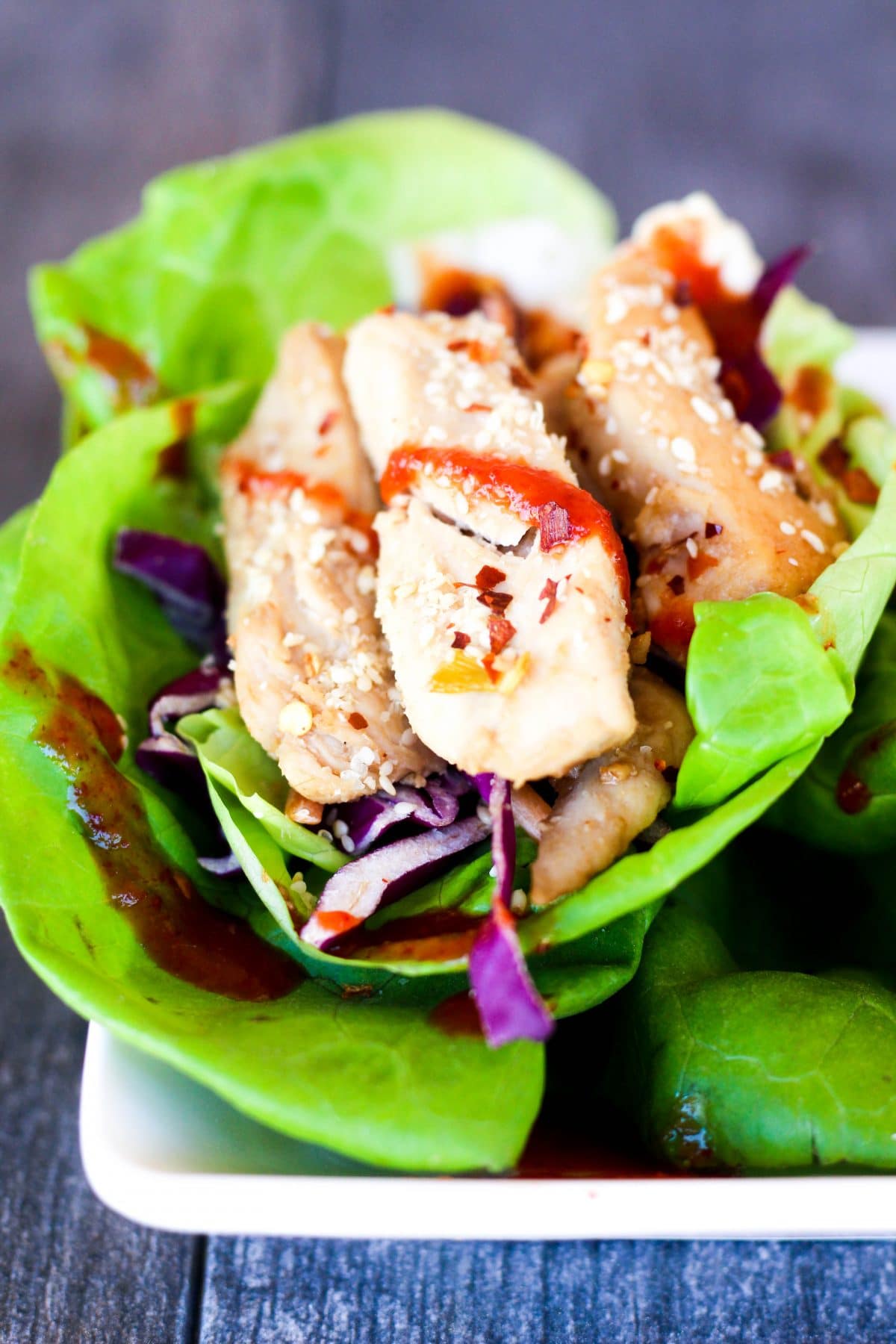Why Protein Is Important:
In this series, we started by upgrading carbohydrates and including healthy fats. However, one of the first goals I work on with my clients is making sure they are getting enough protein at each meal and throughout the day. The reason I started with carbs and fats was that I feel like they get so much bad press, while protein seems to be a bit of a superstar. No surprise since protein plays such an important role in so many functions in our body including but not limited to:
- Build and repair tissues.
- The building block of bones, skin, muscle, cartilage and blood.
- Used to make enzymes, immune system factors, hormones and other body chemicals.
- Making up hair and nails.
- Positive effects of weight management and metabolism:
- Requires 10-20% of calorie to break down to utilize in the body versus 1-3% for fat and 5-7% for carbs, this means you burn more calories digesting protein than fat or carbs.
- Initiates satiety hormones making a meal seem more filling and holding you over for longer (generally leading to a lower calorie intake overall).
- Pairing protein with a healthy carbohydrate slows the absorption of sugar into your bloodstream, promoting stable blood sugar for hours after the meal can ward off cravings and energy dips.
- Protein helps preserve muscle mass during weight loss or a calorie deficit.
Is All Protein Created Equal?
Recently it seems like food companies are adding protein to everything, which isn’t necessarily a bad thing, protein has many benefits (see above.) However, many foods/products that have added protein are highly processed and use protein isolates or often concentrates from whey, gluten, or soy to increase protein content. While this can be helpful to add a little extra or balance out a meal, you might be missing many of the nutrients found in food more natural state. For example, with whey protein (a protein concentrated from milk) you lose out on some of the calcium and potassium naturally found in dairy sources. Therefore I don’t think you need a supplement to get enough protein, but it can be a convenient, helpful option.
After the hundreds of food sensitivity tests, I’ve reviewed with my clients I’ve started to realize that many people develop sensitivities to concentrated protein sources when used daily for long stretches of time. That doesn’t mean I think protein supplements are bad (I use them all the time), but I do believe that you should keep rotating your concentrated sources as much as possible (either alternate between types at home during the week or pick a new one every time you go to the store). To get enough absorbable nutrients, I usually recommend protein supplements (bars, powders, etc..) or highly processed food supplemented with protein no more than 1-2 times per day and focusing on real food the rest of the day. Another point to keep in mind is that even though products with added protein create a slightly better blood sugar curve than their lower protein counterpart, they often still do not contain enough protein to create a truly balanced meal, and therefore you may still experience some pretty significant blood sugar fluctuations, depending on what the product is. To help you get started getting enough protein, here is a quick breakdown of where protein typically comes from in the diet:

Meat & Poultry, Per 3 ounce serving:
- Chicken: 28g
- Steak: 26g
- Turkey: 25g
- Lamb: 23g
- Pork: 22g
- Ham: 14g
Creamy Cilantro-Jalapeno Shrimp
Fish & Seafood, Per 3 ounce serving:
- Salmon: 22g
- Tuna: 22g
- Shrimp: 20g
- Lobster: 16g
- Scallop: 16g
Vegetarian:
- One egg: 6g
- 1 cup Greek yogurt: 25g
- 1 cup traditional yogurt: 11g
- ½ cup Cottage Cheese: 14g
Vegan:
- Tofu (per ½ cup) or edamame per ½ cup in shells: 10grams
- Vegan Protein Powders
Other:
- Some healthy carbohydrates sources such as beans vary between 6-11grams of protein per ½ cup serving.
- Cow's milk contains 8grams per cup, the new ultra filtered Fairlife milk contains 13g per cup.
- Healthy fats such as nuts (other than soy) and seed butter vary between 6-9grams of protein per 2T or 1 ounce.
- Whole grains tend to have more protein than the refined versions.
- Some vegetables also contain trace amounts of protein, usually 1-3grams per serving.
How Much Protein Should You Have?
I wish I had a set formula to give you or percentage of your diet, but the fact is how much you need is unique to you and your goals. The USDA recommends at least 0.8g per kg of body weight (1 kg = 2.2lbs). However, I find the majority of my clients need quite a bit more than that. Conversely, excess calories from protein will still lead to weight gain, just like an excess of fat or carbohydrates. A good away to get started is by just focusing on including protein sources at meals and snacks (this week’s healthy habit!).
If you are interested in receiving more personalized recommendations as I discuss with my Hungry Hobby RD clients, check out my one on one nutrition counseling website here.
52 HEALTHY HABITS IN 52 WEEKS SERIES:
The 52 Healthy Habits Series is about ditching the diet mindset and making small changes to improve health overall naturally leading to a healthy body composition, increased energy and improved health. Please follow along and check out the past weeks!
- Week 52: Healthy Habits Wrap Up
- Week 51: Nightly Reflection
- Week 50: Limit Harmful Chemicals
- Week 49: Find Your Tribe
- Week 48: Cultivating Positivity
- Week 47: Healthy Thanksgiving Tips
- Week 46: Check In
- Week 45: Mobility – Foam Rolling
- Week 44: HIIT Training
- Week 43: LISS or Steady State Cardio
- Week 42: Limit Alcohol
- Week 41: Eat White, Wait What?
- Week 40: Eat Blue & Purple
- Week 39: Eat Green
- Week 38: Eat Yellow/Orange
- Week 37: Eat Red
- Week 36: Learn Which Foods to Purchase Organic
- Week 35: Read the Ingredient List!
- Week 34: Focus.
- Week 33: Chew Your Food!
- Week 32: Meditation
- Week 31: Gratitude Journaling
- Week 30: Plan & Revamp Dessert- 20 Healthy Ideas
- Week 29: Two fistfuls of veggies per meal
- Week 28: Get In Veggies At Breakfast
- Week 27: Healthy Veggie Snacks
- Week 26: Nourishing Fats for the Gut (Healthy Digestion Part 4)
- Week 25: Keeping Regular – The Other Fiber (Healthy Digestion Part 3)
- Week 24: Feed The Probiotics With Prebiotic Fiber (Healthy Digestion Part 2)
- Week 23: Amazing Health Benefits of Probiotics (Healthy Digestion Part 1)
- Week 22: Check In
- Week 21: What You Will Learn From Recording Your Meals (Intuitive Eating Series Part 4)
- Week 20: Eat Until 80% Full (Hara Hachi Bu) (Intuitive Eating Series Part 3)
- Week 19: Limit Distractions While Eating (Intuitive Eating Series Part 2)
- Week 18: Gaging Your Hunger Cues (Intuitive Eating Series Part 1)
- Week 17: 10,000 Steps Per Day
- Week 16: Assess Your Caffeine Intake
- Week 15: Decrease Sugar Intake
- Week 14: Healthy Coffee Creamers (upgrade yours)
- Week 13: 3 Month Check In
- Week 12: Sleep Enough & Sleep Better
- Week 11: Schedule Your Workouts
- Week 10: Pack A Healthy Lunch (5 Ways to Create Endless Combinations)
- Week 9: Prioritizing Protein
- Week 8: How and What to Meal Prep
- Week 7: Create & Stick To Your Healthy Meal Plan
- Week 6: Get Enough Omega-3’s (Fight Inflammation)
- Week 5: What Is A Healthy Fat & How To Get Enough (Include Healthy Fats)
- Week 4: How to Spot A Healthy Carbohydrate (Upgrade Your Carbs)
- Week 3: Tips to Increase Veggie Intake (Eat Veggies)
- Week 2: 15 Healthy On the Go Breakfast Ideas (Eat BF Challenge)
- Week 1: Tips to Drink More Water










Rose says
WOW! This was really great. Thank you for sharing - pinned it for later.
Kelli Shallal MPH RD says
Thanks Rose!
Hun Puthic says
Wow. It's really helpful. I will try this tips for my protein daily using.